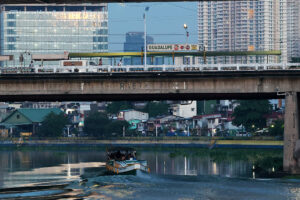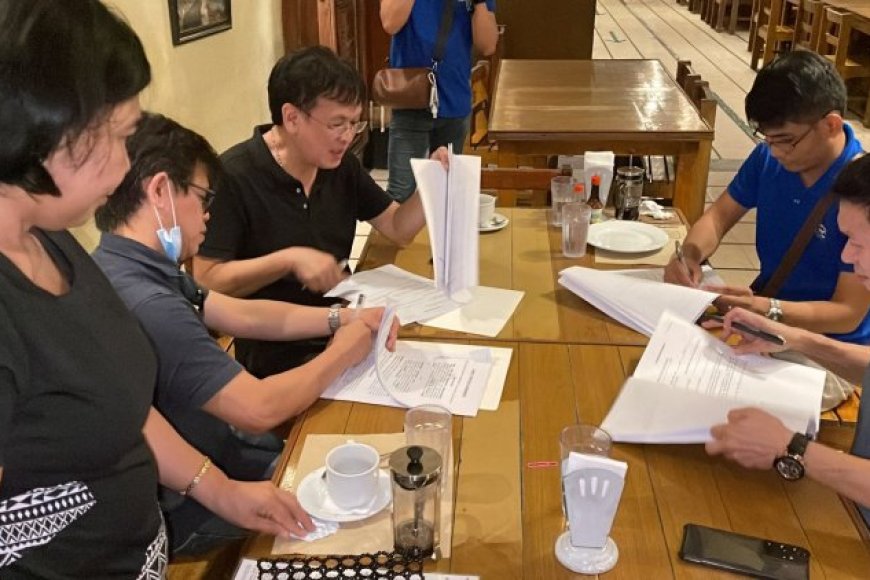Q3 foreign investment pledges drop
FOREIGN INVESTMENT pledges declined 22.4% in the third quarter as investors fretted over a looming global economic slowdown, soaring inflation and the ongoing Russia-Ukraine war. Data from the Philippine Statistics Authority (PSA) showed total...

FOREIGN INVESTMENT pledges declined 22.4% in the third quarter as investors fretted over a looming global economic slowdown, soaring inflation and the ongoing Russia-Ukraine war.
Data from the Philippine Statistics Authority (PSA) showed total approved foreign investments dropped to P13.05 billion in the July to September period, from P16.82 billion in the same period a year ago.
This was the smallest quarterly amount since the P8.981-billion investment pledges approved in the first quarter of this year.
For the first nine months of 2022, approved foreign investment pledges rose 15.6% to P68.28 billion.
Japanese investments accounted for 34.5% or P4.5 billion of the total approved foreign investments, followed by South Korea which made up 15.5% (P2.02 billion), and Singapore with 12.6% (P1.64 billion).
According to the PSA, the third-quarter investments were approved by four investment promotion agencies (IPAs) namely the Board of Investments (BoI), Clark Development Corp., (CDC), Philippine Economic Zone Authority (PEZA), and Subic Bay Metropolitan Authority (SBMA).
The PEZA accounted for 70.9% or P9.25 billion of total investments in the July to September period, followed by BoI with 16.5% or P2.16 billion and the CDC with 10.5% or P1.36 billion. The SBMA approved P276.13 million worth of investments.
No foreign investments were approved by other IPAs such as the Authority of the Freeport Area of Bataan (AFAB), BoI-Bangsamoro Autonomous Region in Muslim Mindanao (BoI-BARMM), Cagayan Economic Zone Authority (CEZA), Poro Point Management Corp. (PPMC), and Tourism Infrastructure Economic Zone Authority (TIEZA).
PSA data showed the manufacturing received the biggest share of approved foreign investments, accounting for 55.2% or P7.20 billion. Administrative and support service activities made up 25.9% (P3.38 billion), while real estate activities accounted for 10.3% (P1.35 billion).
Half or P6.6 billion of the approved investments will go to Calabarzon (Cavite, Laguna, Batangas, Rizal, and Quezon), while Central Luzon will receive 23% or P3.02 billion, and National Capital Region with P2.24 billion or 17.1%.
Once materialized, these projects are expected to generate 17,994 jobs.
The approved investments of foreign and Filipino nationals in the third quarter surged 58% year on year to P159.18 billion. Of the total, Filipino nationals accounted for P146.13 billion or 91.8%.
Sought for comment, Trade Undersecretary Ana Carolina P. Sanchez told BusinessWorld in a Viber message that the drop in approved foreign investments may be due to worries over a global economic slowdown.
“This is still partly a result of the global recession pushed by increasing inflation and interest rates, and the rising energy prices from Russia-Ukraine war,” Ms. Sanchez said.
Headline inflation accelerated to 6.9% in September, from 6.3% in August as prices of food and utilities continued to rise. As of end-September, inflation averaged 5.1%, still below the Bangko Sentral ng Pilipinas’ (BSP) 5.6% forecast for the full year.
The economy expanded 7.6% year on year in the third quarter.
“A combination of geopolitical factors — the Ukraine War, volatile energy prices, high US interest rates, and overall global economic uncertainty — and wait-and-see attitude on the policies of the new administration probably accounts for the dip in foreign investments this year compared to last year,” Foundation for Economic Freedom President Calixto V. Chikiamco said in a Viber message.
Tereso O. Panga, PEZA officer-in-charge and deputy director general for policy and planning, said in a Viber message that the agency expects to approve several big-ticket items in its next few meetings.
“We remain bullish that we will achieve our 6% to 7% growth target for 2022 given the high GDP growth forecast for the Philippines, making it one of the best performing economies in the region, and the aggressive support of President Ferdinand R. Marcos, Jr. and Trade Secretary Alfredo E. Pascual to promote the Philippines as the smart investment choice in the region and the ecozones in terms of attracting strategic, high-tech and high-value investments,” Mr. Panga said.
Rizal Commercial Banking Corp. Chief Economist Michael L. Ricafort said that investments could possibly increase in the last quarter.
“Foreign investments into the country could pick up in the coming months as the new administration already started since June 30, 2022 especially in view of the investment commitments from the recent visits to Indonesia, Singapore, and the US,” Mr. Ricafort said. — Revin Mikhael D. Ochave























